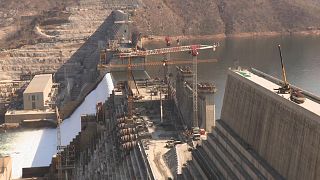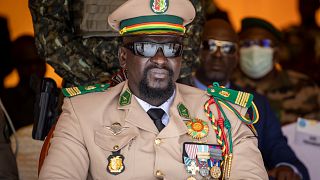Central African Republic
After decades of instability and conflict in Central African Republic (CAR), one in five Central Africans is either internally displaced or has found refuge abroad.
They fled their homes due to ongoing fighting between the country’s numerous armed factions, which has seen thousands of people killed.
Many have settled in the PK3 camps for internally displaced people (IDP) near the town of Bria, capital of the eastern Haute-Kotto prefecture.
Just three kilometres outside of town, it is the largest in the country and almost everyone living there has lost everything in the fighting.
Life in IDP sites is difficult, with insufficient access to clean water, sanitation, food, education, medical care, and intercommunal clashes.
However, in some regions like Bria, where security is improving, people now have new opportunities to settle down off-site for a safer and better life.
Raphael Dekeuzago, 41, comes from the neighbouring prefecture of Ouaka. When the war broke out, he fled his home and sought refuge at PK3. But even there, life wasn't easy for him.
Getting water to drink or take a shower was complicated. Due to his disability, Raphael needed help drawing water from the well, and this help was rarely available.
In addition, the process often took several hours because of long queues. After living on the site for several years, he decided to move to a district of Bria.
The Humanitarian Fund for the Central African Republic (CAR HF), managed by the UN humanitarian affairs office (OCHA), supports projects providing more sustainable solutions for displaced people.
With partners including the UNHCR, USAID, and IOM, the fund contributes to the construction of shelters and helps people get water, household items, and cash for income-generating activities.
The support provided by OCHA and its partners allowed Raphael to build a house and start his own business, selling various items such as toothbrushes, toothpaste, sugar, blades, keys, biscuits, and sweets.
Raphael said he has managed to save his profits and start other activities.
“I plan to split the money saved into two. One part will be used to pay the dowry for my future wife, hoping that God blesses us with children and that we can live together happily as a family,” he said.
Now, he lives right next to a water point and can ask the neighbourhood children for help fetching water. He lives in better conditions and can meet his own needs.
There are currently about 500,000 IDPs in the Central African Republic, accounting for over 8 per cent of the population.
Displaced people often face threats of eviction, increasing insecurity on the sites, and community tensions.
In 2024, the Humanitarian Response Plan for the Central African Republic is targeting nearly 429,000 of the most vulnerable people living in sites, with host families, in host communities, or in returnee situations.
OCHA and its partners will facilitate access to civil documentation for returnees and support community-based protection mechanisms to prevent and report violence, especially against women and children, and to promote social cohesion.













01:09
Wars displace over 122 million people as global aid dwindles – UNHCR
01:49
UN warns of impact Sudan's humanitarian crisis is having on Chad
01:32
Land convoy leaves Tunisia for Gaza, in an effort to break Israel's siege
01:25
Trump's travel ban cuts lifeline for Haitians facing security crisis
Go to video
Humanitarian crisis in Yemen worsens after WFP halts food shipments
01:12
Cameroon tops list of world's most neglected displacement crises